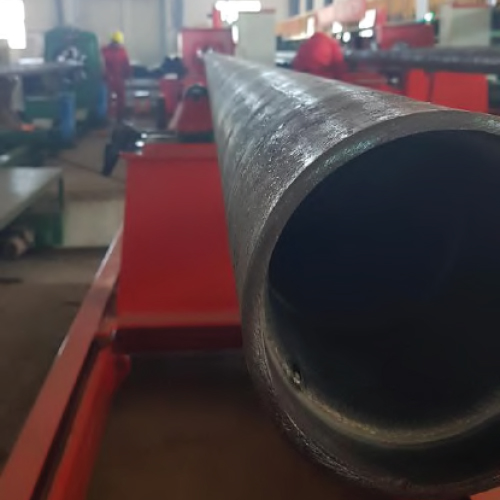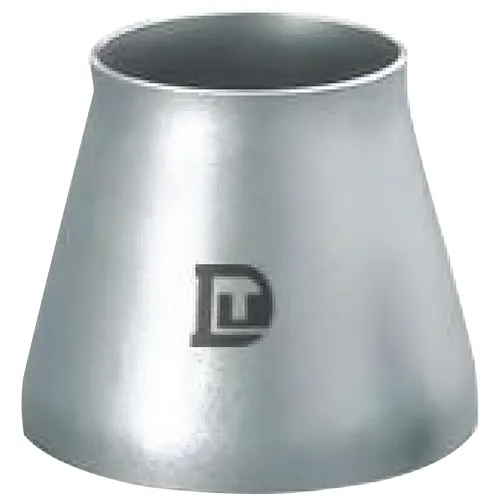Description
Titanium is a strong carbide former and makes up for an exceptional stabilizing element in the grade. An addition of titanium by five times the carbon content (0.70% max) ensures the stabilization of carbides at the heat affected zones.
This improves the intergranular corrosion resistance of the grade, especially after the processes followed by 430-820°C, which includes the intermetallic sigma phase. For this purpose, the grade can be used with continuous as well as intermittent service in the range of 430-820°C. The grade also has exceptional mechanical properties even at elevated temperatures. The grade is readily selected for applications below 950°C since it efficiently retains its strength, phase stability, and resists scaling. It has a high melting point of about 1450°C. The grades’ refurbished version – 321H, which has higher carbon content can be suitably used at elevated temperatures for better strength.
Heating for prolonged periods should be avoided since it might affect the general resistance properties of the metal against different media. The grade 321 has got adequate creep resistance to sustain elevated temperatures and cyclic thermal loads. The grade is one of the most weldable alloys because of its titanium stabilization at the heat affected zone, preservation of corrosion resistance, and resistance to cracking. The grade is generally non-magnetic in annealed condition due to its microstructure. The same cannot be said after welding and cold working.
Chemical Properties
| Grade | Ni | C | Cr | Mn | Si | P | Ti | S | N | Fe | |
| 321 | Min. | 9.0 | – | 17.0 | – | – | 0 | – | – | – | 65.045 |
| Max. | 12.0 | 0.08 | 19.0 | 2.0 | 1.0 | 0.045 | 5(C+N) -0.70 | 0.030 | 0.10 | – | |
| 321H | Min. | 9.0 | 0.04 | 17.0 | – | – | – | – | – | – | 65.25 |
| Max. | 12.0 | 0.010 | 19.0 | 2.00 | 1.00 | 0.045 | 4(C+N) -0.70 | 0.030 | 0.10 |
Physical Properties
| Density | 0.286 lbs / in3 7.920 g /cm3 |
| Melting Point | 2550 – 2635°F 1398 – 1446°C |
| Specific Heat | 0.12 BTU/lb-°F (32 – 212°F) 500 J/kg-°K (0 – 100°C) |
| Thermal Conductivity @ 212°F | 9.3 BTU/hr/ ft2/ft /°F 16.0 W/m-°K |
| Elastic Modulus | 28.0 x 106 psi 193 GPa |
| Electrical Resistivity | 72 Microhm-cm at 20°C |
| Annealing | 950-1120°C |
General Data
| Standard | 321 | 321H |
| UNS | S32100 | S32109 |
| WERKSTOFF NR. | X6CrNiTi18-10 | X10CrNiTi18-10 |
| EN | 1.4541 | 1.4878 |
| BS | 321S31 | 321S51 |
| Swedish | 2337 | – |
| JIS | SUS 321 | SUS 321H |
Standards Specifications
PIPES & TUBES
| Summary | Standards |
| Standard Specification for Seamless Ferritic and Austenitic Alloy-Steel Boiler, Superheater, and Heat-Exchanger Tubes | ASTM A213 |
| Standard Specification for Welded Austenitic Steel Boiler, Superheater, Heat-Exchanger, and Condenser Tubes | ASTM A249 |
| Standard Specification for Seamless and Welded Austenitic Stainless Steel Tubing for General Service | ASTM A269 |
| Standard Specification for Seamless, Welded, and Heavily Cold Worked Austenitic Stainless Steel Pipes | ASTM A312 |
| Standard Specification for Electric-Fusion-Welded Austenitic Chromium-Nickel Stainless Steel Pipe for High-Temperature Service and General Applications | ASTM A358 |
| Standard Specification For Seamless Stainless Steel Mechanical Tubing | ASTM A511 |
| Standard Specification for Welded Large Diameter Austenitic Steel Pipe for Corrosive or High-Temperature Service | ASTM A409 |
FITTINGS & FLANGES
| Summary | Standards |
| Standard Specification for Wrought Austenitic Stainless Steel Piping Fittings | ASTM A403 |
| Standard Specification for Forged or Rolled Alloy and Stainless Steel Pipe Flanges, Forged Fittings, and Valves and Parts for High-Temperature Service | ASTM A182 |
Forms of Supply
Pipes and fittings, fittings and flanges, washers.
Corrosion Resistance
The grade has excellent resistance to oxidation as well as general corrosion with exceptional creep resistance. It can take thermal cyclic loads efficiently at elevated temperatures. The grade performs exceptionally well in the presence of organic and inorganic acids. The grade does not fare very well in the presence of chloride environments, and might be subject to stress corrosion cracking. Apart from this, the grade has good localized corrosion resistance like pitting and crevice corrosion resistance. With proper service, the grade could perform better than grade 304 at around 430-820°C. The inter-granular corrosion is easily resisted due to its titanium stabilization of carbides. It shows resistance to most oxidizing acids and agents, combustion gases, nitric acid and even sulphuric acid to some extent. The surface needs to be passivated to ensure maximum corrosion resistance. Also, it needs to be free of foreign particles and impurities.
Heat Treatment
The grade needs to be suitably annealed and stress relieved after various working processes. It is solution annealed at a temperature of about 930-1100°C and then cooled rapidly for maximum corrosion resistance. The process is normally done to impart the required softness and ductility. Stress can be suitably removed from the grains with proper heat treatment. A treatment of about 700°C will efficiently relieve stresses, without doing any damage to intergranular corrosion. However, more than required heating of the grade might result in lowering its corrosion resistance properties. Stabilizing anneal is sometimes required for better corrosion resistance. Stabilizing anneal is done around 900°C, above the general carbide precipitation range. At this range, the carbides that are previously formed dissociate, and the chromium is restored to its solid form, while the titanium is converted into a harmless titanium carbide. Hence, stabilization takes place. Also, the grade is non-hardenable by heat treatment.
Weldability
The grade has great welding properties and can be welded by conventional methods like common fusion and electric resistance welding. The titanium stabilization gives the heat affected zone a relief from carbide precipitation. The grade needs to avoid hot cracking at the weld to manage its ferritic phase by using convenient weld fillers.
Machining
The grade work hardens very quickly, and hence proper machining techniques are required. Slow speeds, rigid tooling and powerful machinery is recommended. The grade can be formed and drawn as required.
Applications
Annealing covers, tempering equipment, firewalls, stack liners, exhaust systems, pressure vessels, superheaters, refinery equipment, bellows, expansion joints, aircraft equipment, bellows, furnace parts, chemical processing, pharmaceutical production, waste treatment.
Possible grade alternatives
GRADES – 304
| Grade | Ni | C | Cr | Mn | Si | P | Fe | S | N | |
| 304 | Min. | 8.00 | – | 18.00 | – | – | – | – | – | – |
| Max. | 10.50 | 0.08 | 20.00 | 2.00 | 0.75 | 0.045 | BAL. | 0.030 | 0.10 |
GRADE – 304L
| Grade | Ni | C | Cr | Mn | Si | P | Fe | S | N | |
| 304L | Min. | 8.00 | – | 18.00 | – | – | – | – | – | – |
| Max. | 10.50 | 0.08 | 20.00 | 2.00 | 0.75 | 0.045 | BAL. | 0.030 | 0.10 |
GRADE – 310
| Grade | Ni | C | Cr | Mn | Si | P | S | N | |
| 310 | Min. | 19.0 | – | 24.0 | – | – | – | – | – |
| Max. | 22.0 | 0.25 | 26.0 | 2.00 | 1.50 | 0.045 | 0.030 | 0.10 |



